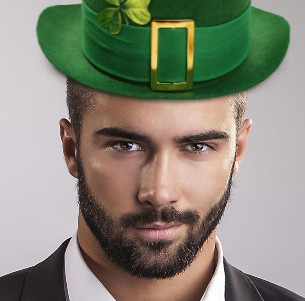
My earliest memories of St. Patrick’s Day are of being chased on the playground, fleeing the pinching fingers of my classmates. Over the next few years, it proved a perfect excuse for interaction with boys, who were otherwise best avoided. All I knew otherwise was that leprechauns existed, presiding over a pot of gold at the end of the rainbow, and that St. Patrick drove the snakes out of Ireland.
Imagine my disappointment when I learned the truth about my gullible assumption that these were real “snakes”—apparently, it refers to his efforts to supplant the pagan Druids. There never were any snakes in Ireland—when the land mass was connected, it was too chilly for them, and it’s been an island for millennia. Interestingly, the snake-free nature of the country has made snake ownership into a status symbol.
St. Patrick’s Day has been decried as becoming too tacky and commercialized as well as perpetuating Irish stereotypes, particularly for drunkenness. The association with booze came about because the Lenten restrictions on alcohol were raised for the day. It was traditional to “wet the shamrock” at the end of celebrations by putting a shamrock into the bottom of a mug, which was then filled with whiskey. The shamrock was either swallowed, or tossed over the shoulder for good luck.
Pat himself was the son of a wealthy 5th century British Roman family who was kidnapped by Irish raiders. He spent six years herding sheep before he could escape and returned later to spread Christianity. He used the shamrock to explain the concept of the Trinity.
OK, but we can count on green as legitimate, for the original color association, right? After all, they tint beer that color. Um, no. When the Order of St. Patrick was formed in 1743, they chose azure blue as their color, which is still seen in heraldic dress and insignia. Lebor Gabála Érenn is a text from the Middle Ages containing Irish stories and historical legends. One relates the story of a boy named Glas who was saved from snakebite by Moses, who placed his staff on the wound, told him it would turn green to remind him of the episode, and that he would lead his people to a land free of snakes. Glas is the Irish word for green, and the “green harp” flag of the Irish Catholic Confederation, as well as other nationalistic organizations, led to green supplanting blue as the color associated with St. Patrick in the late 19th century.
Today, St. Patrick’s Day is celebrated in more countries than any other national festival—even in the International Space Station!
Get your green on, and then go forth and pinch someone!
Recent Comments